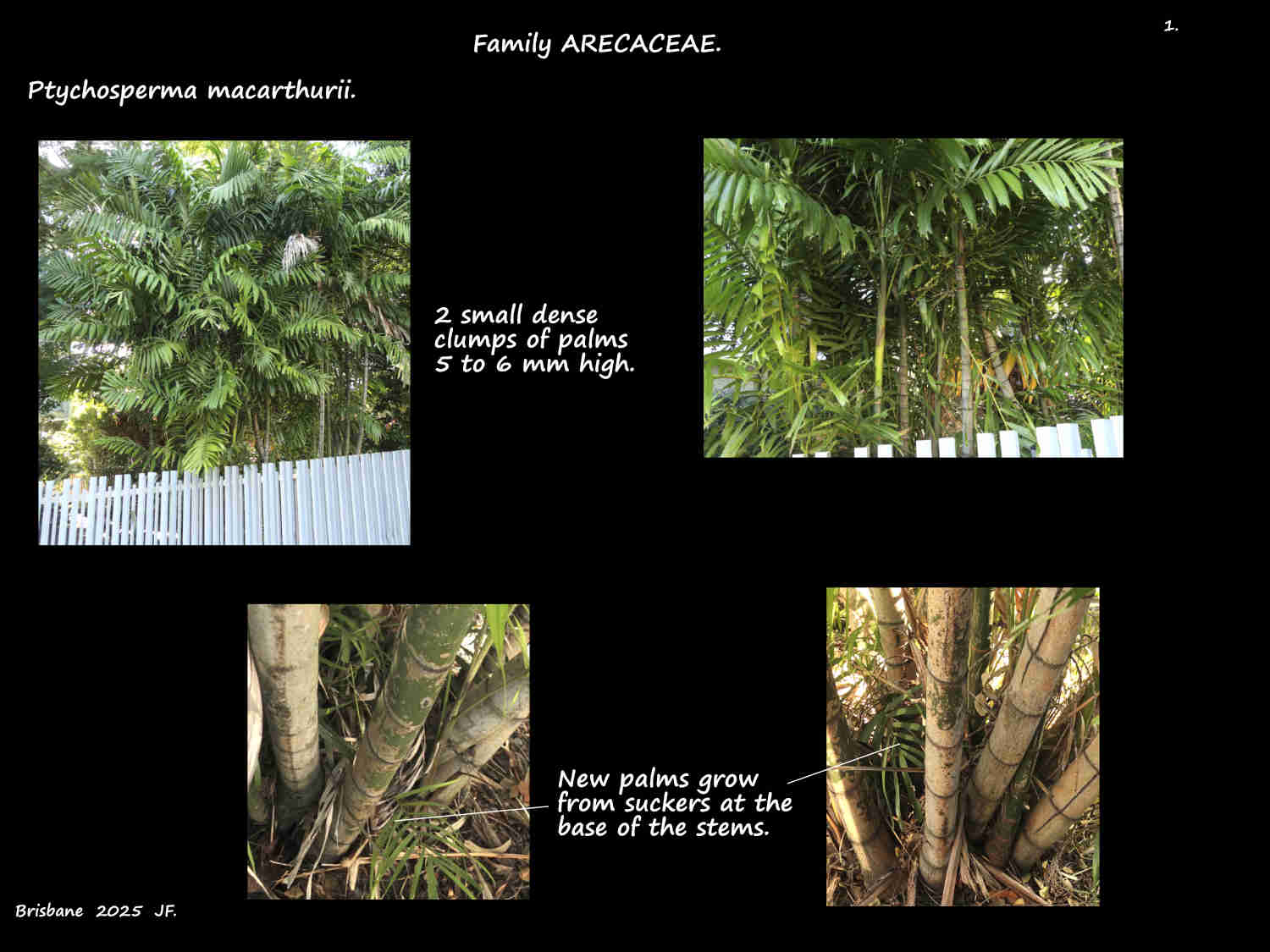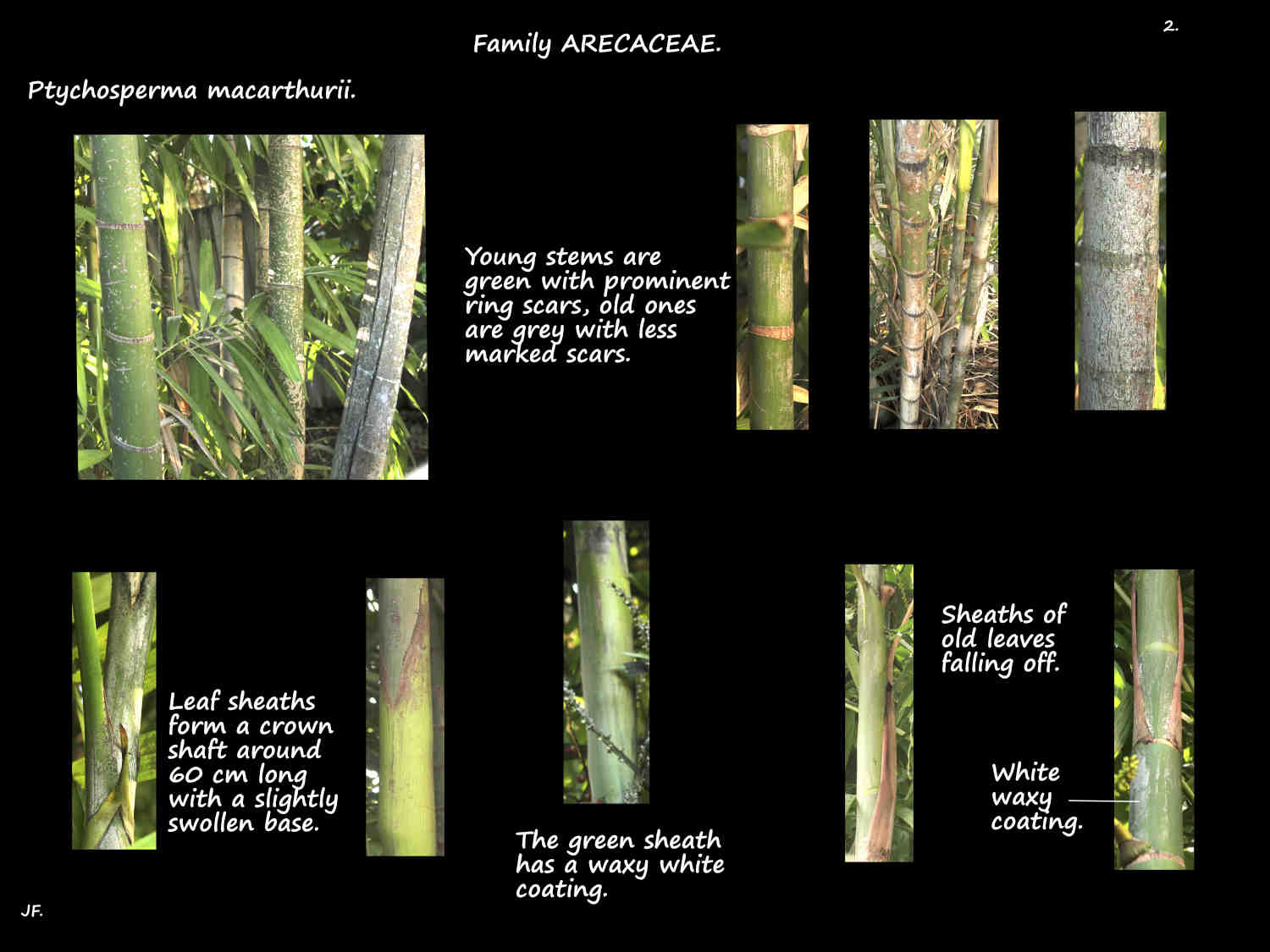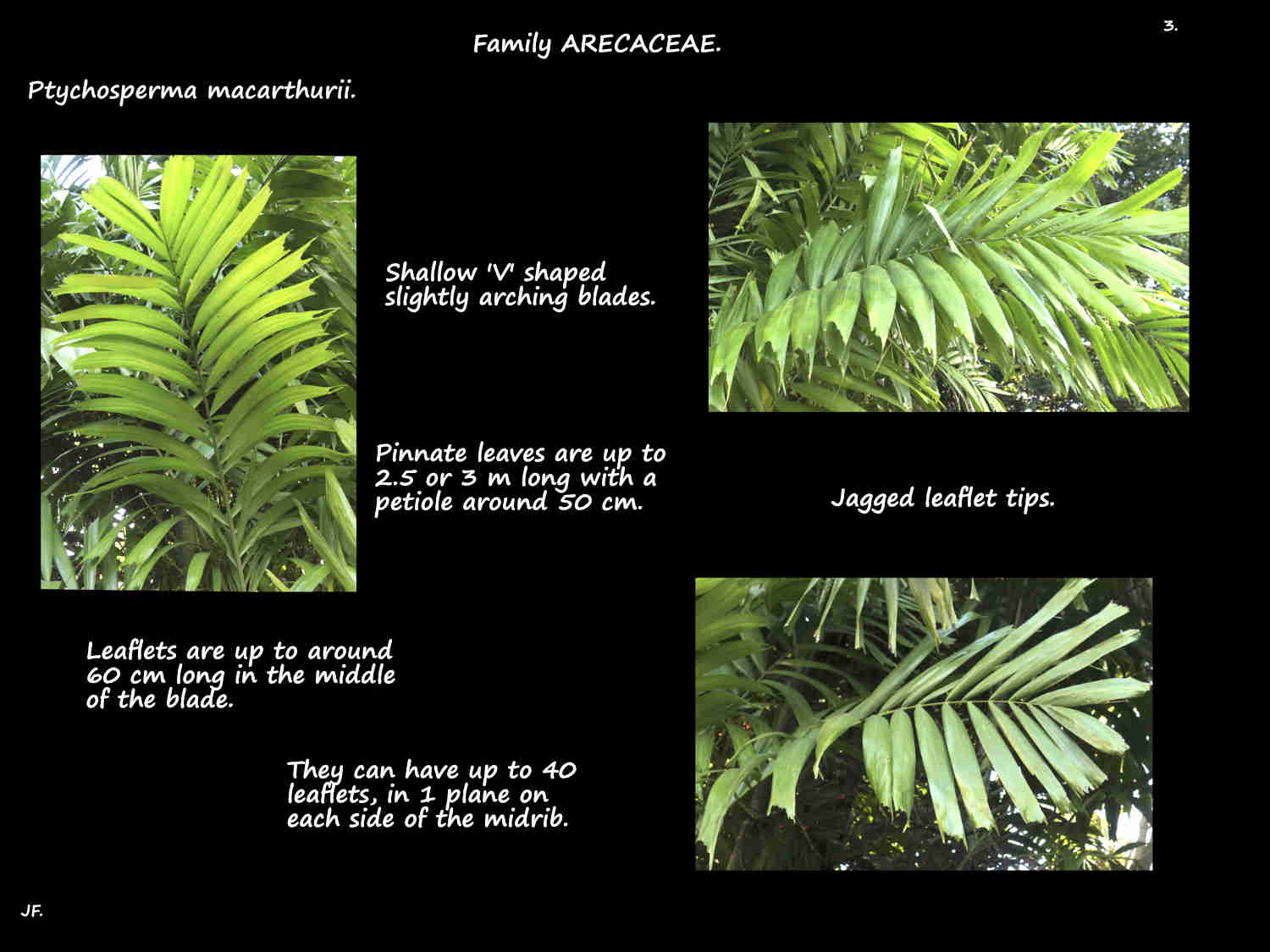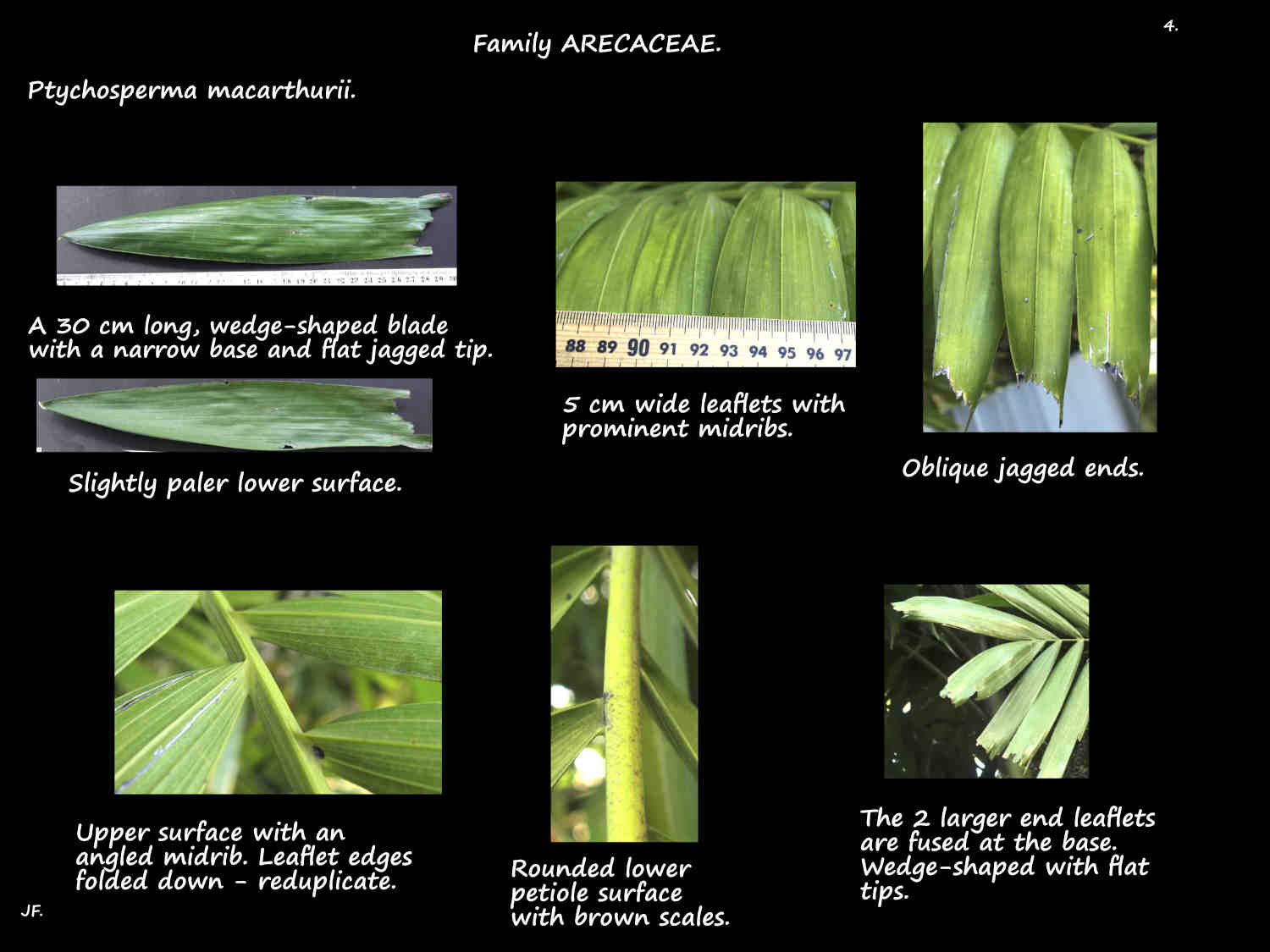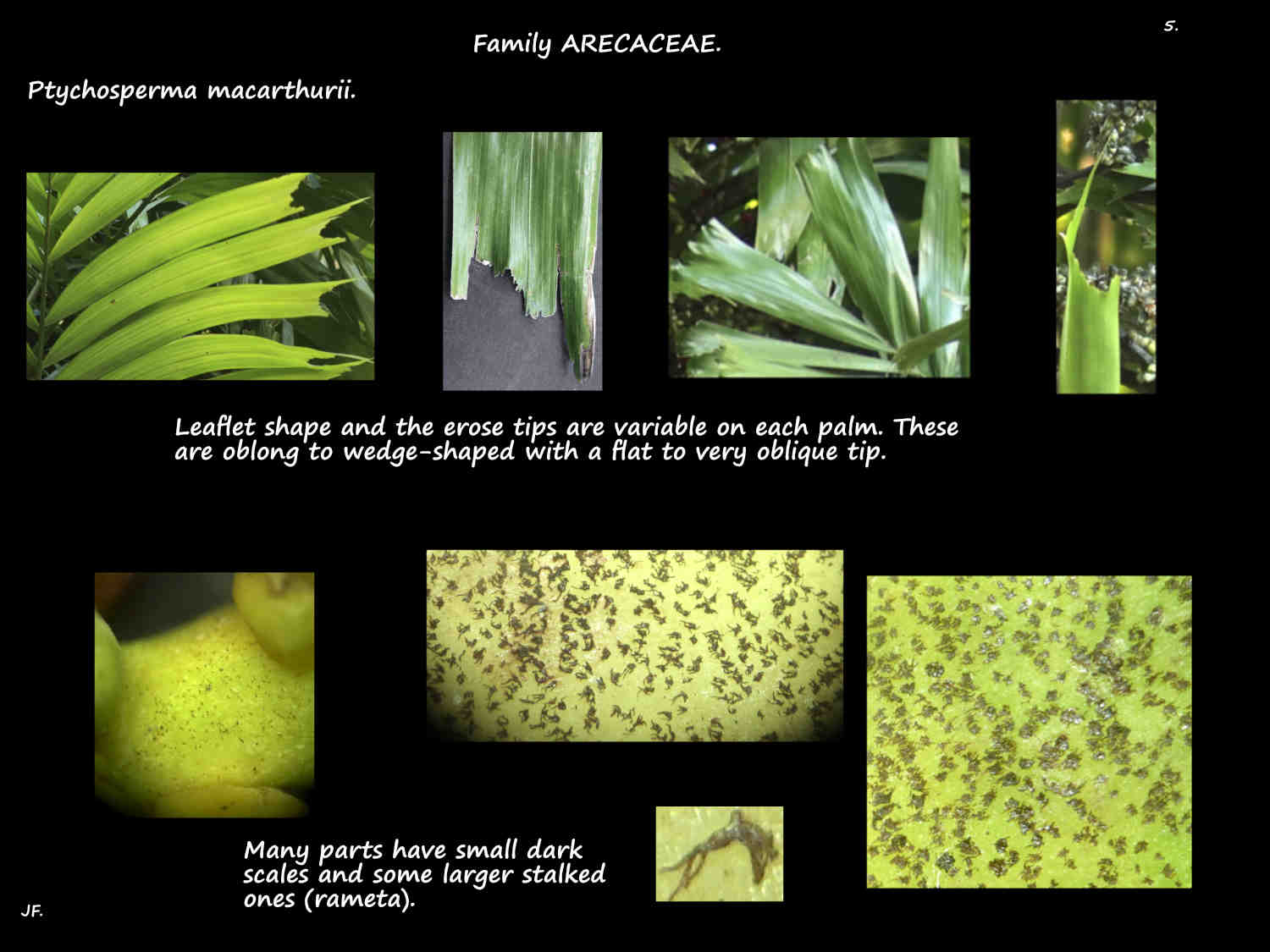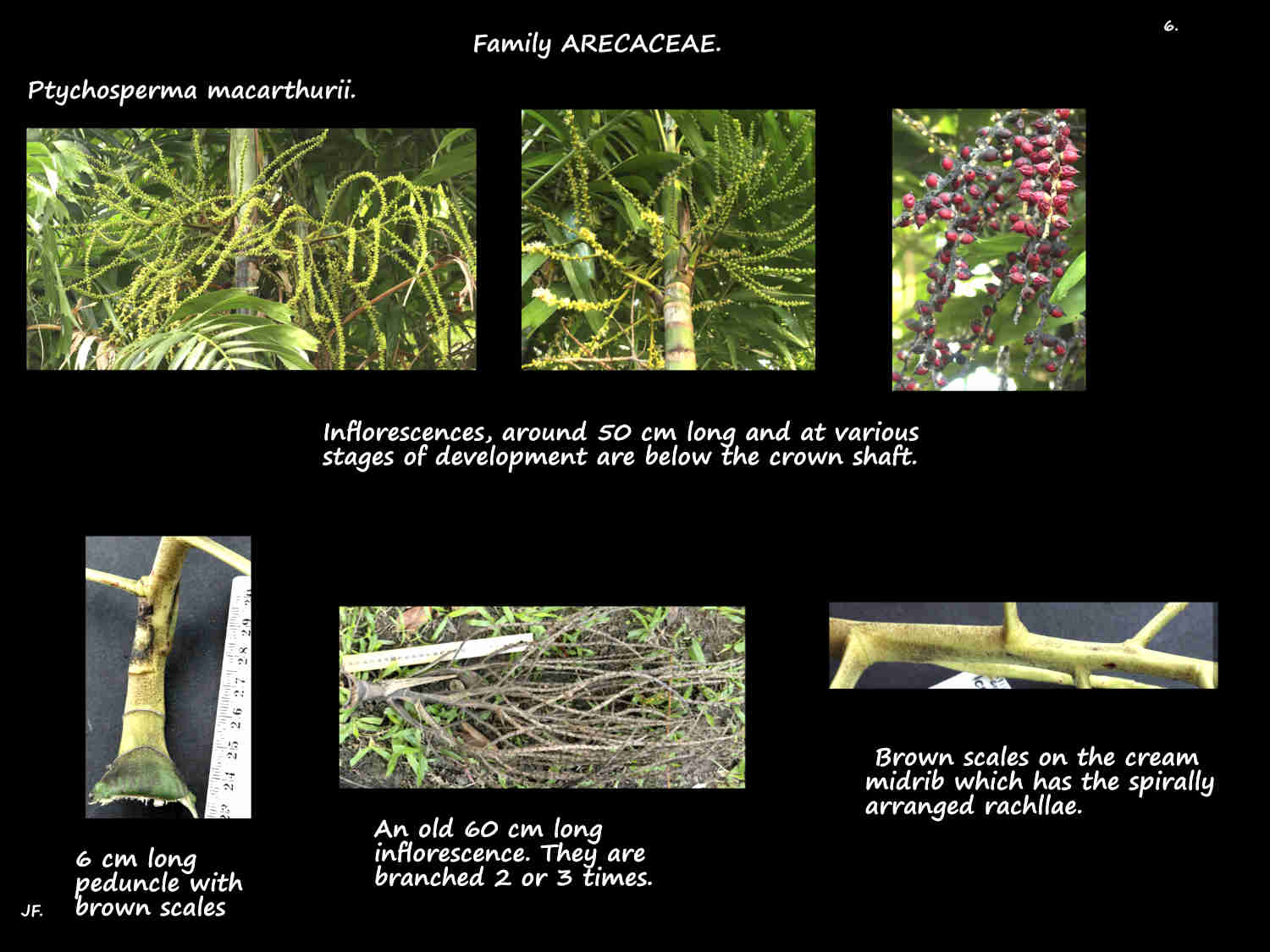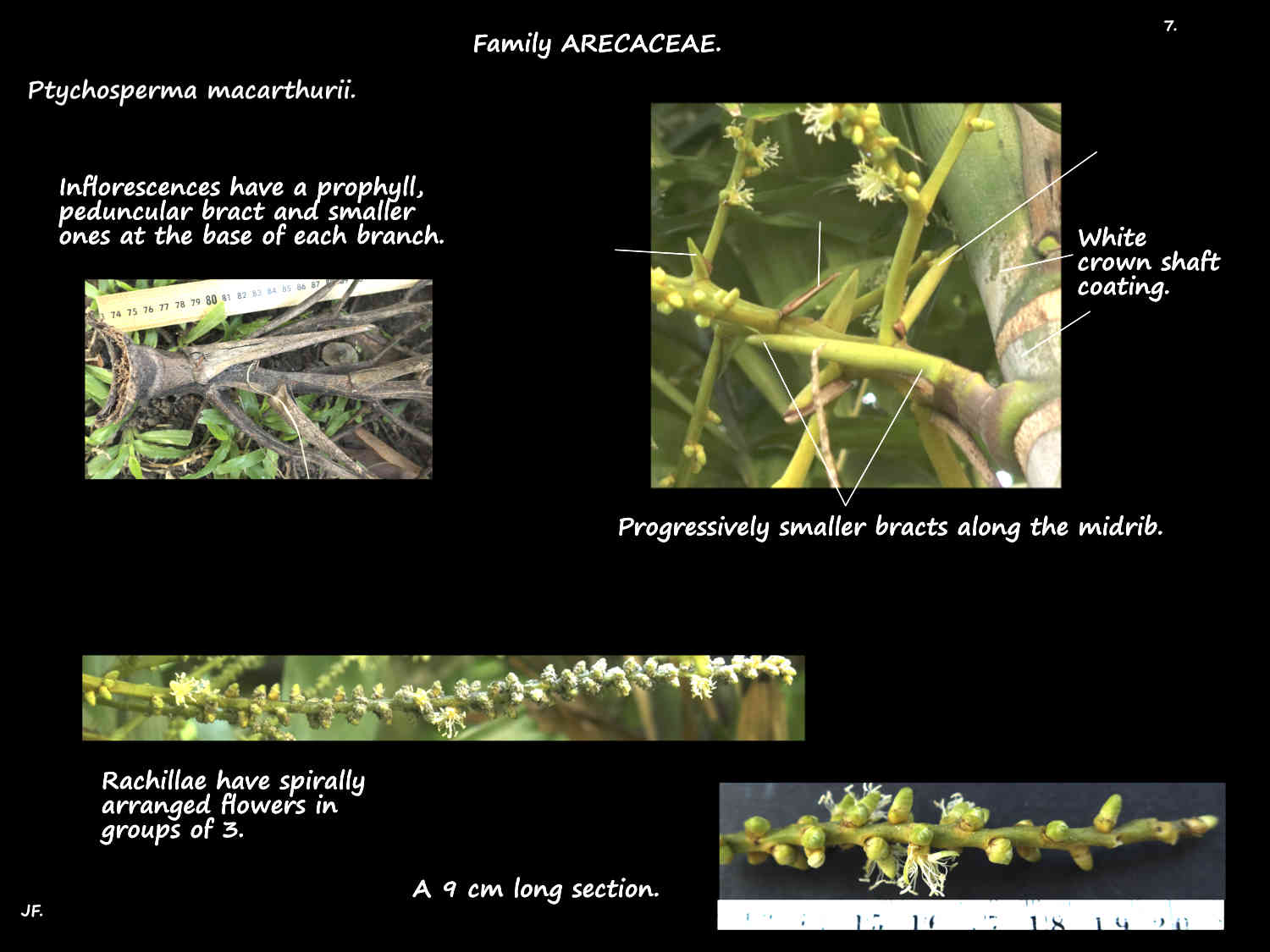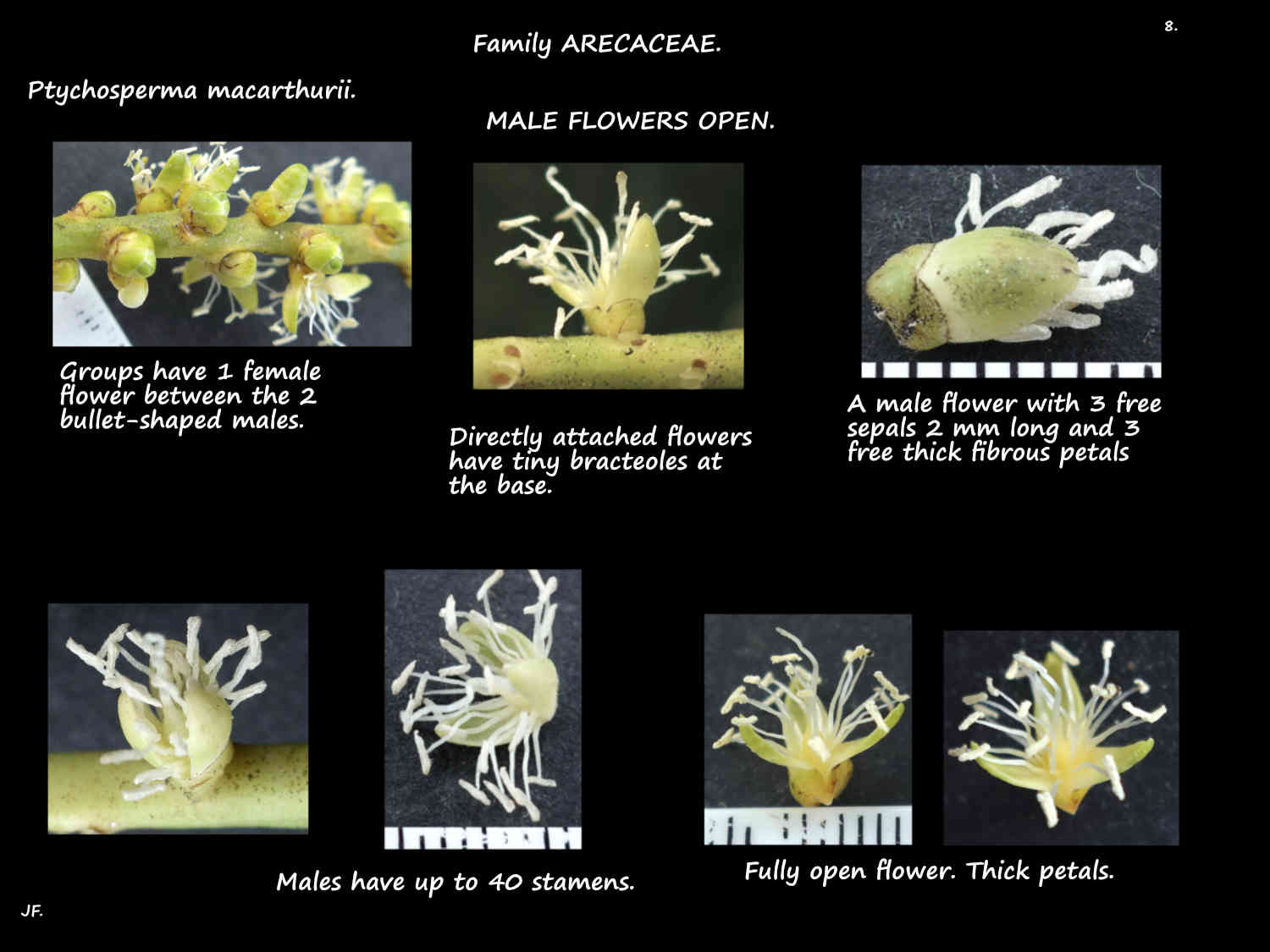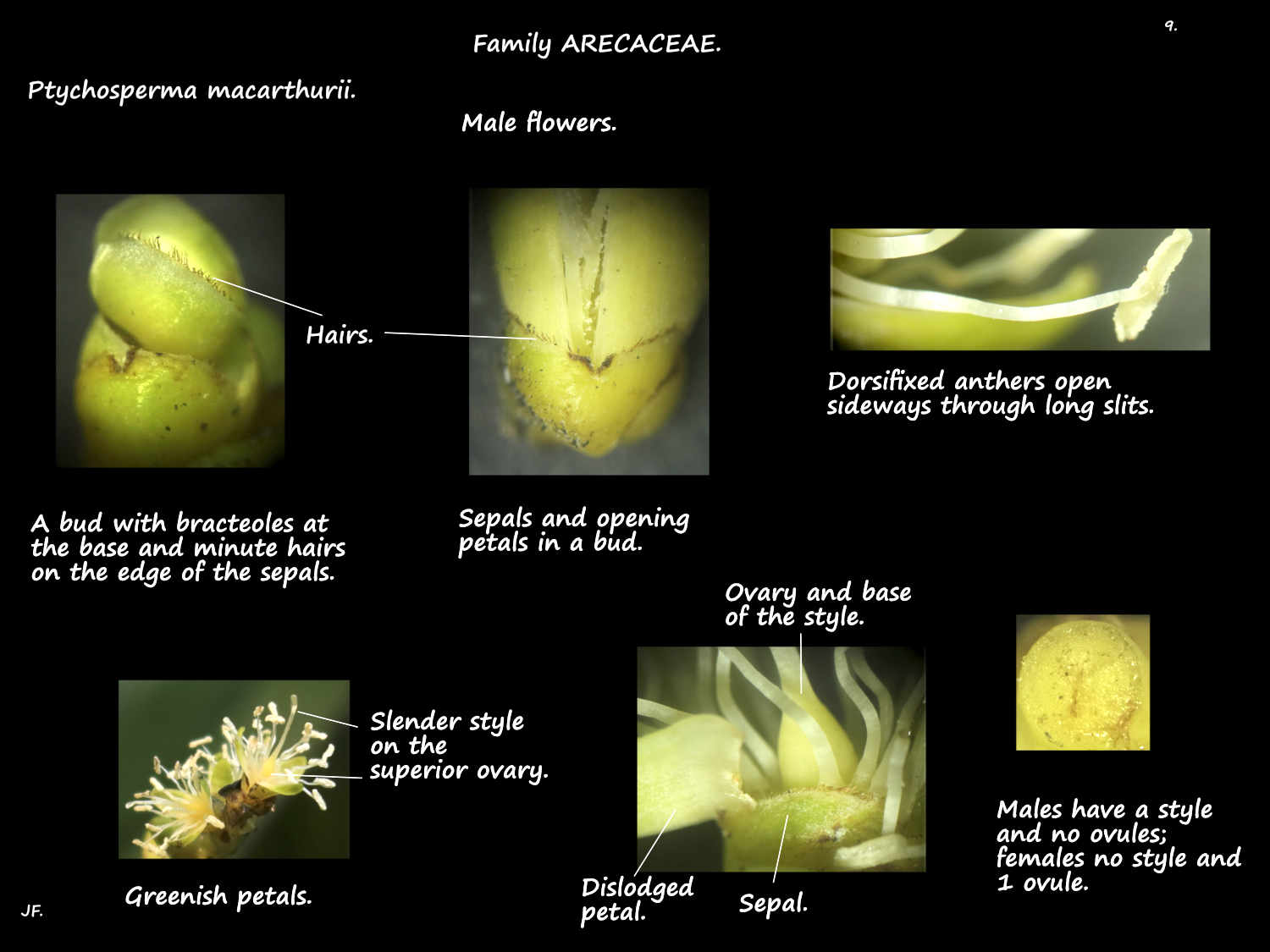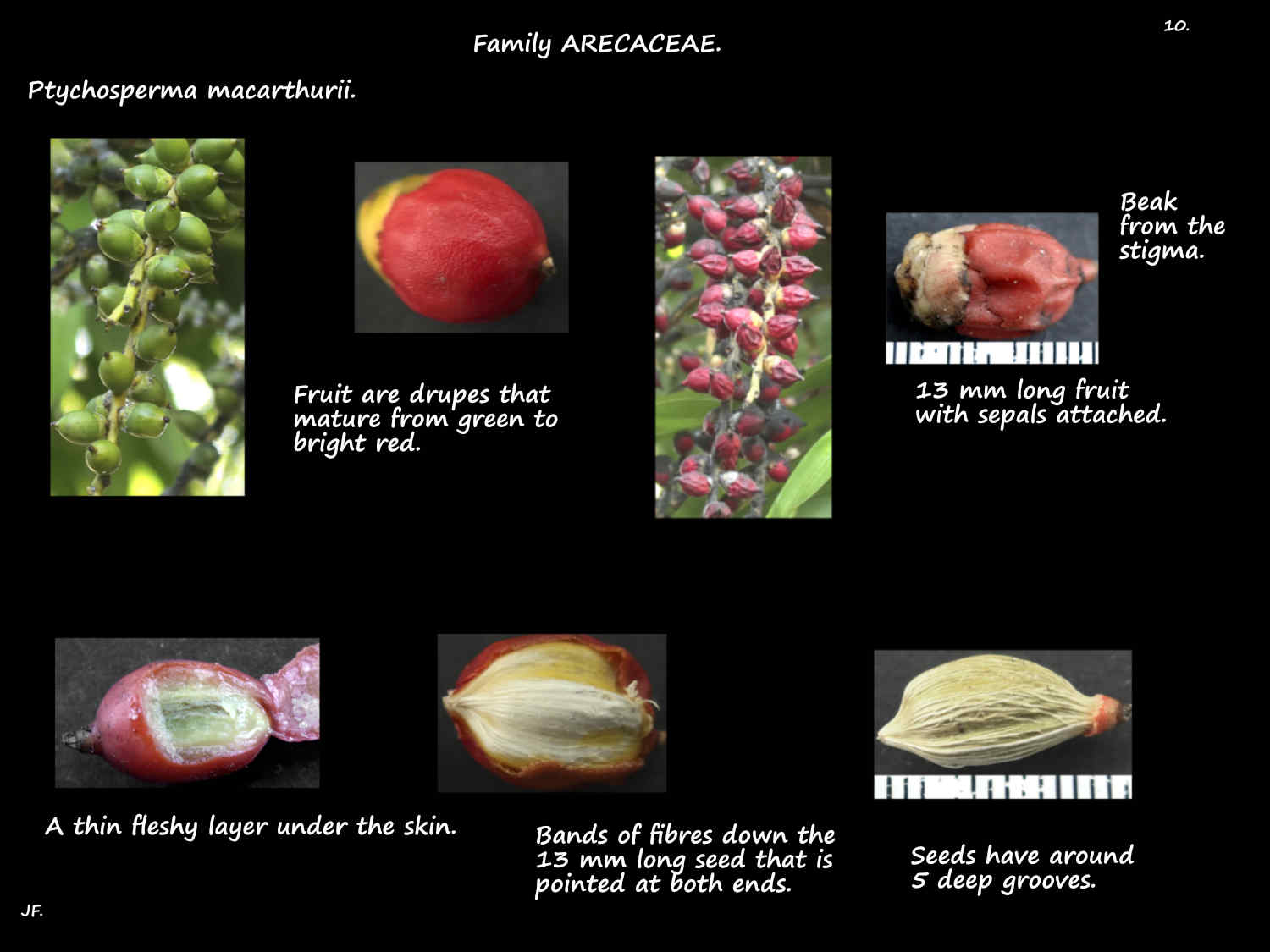Originally named Ptychosperma macarthurii it was sold as Kentia macarthurii.
One of the most commonly grown palms it is still seen as the Kentia palm.
The Macarthur palm is native to eastern Queensland and New Guinea.
The multi-stemmed palms sucker at the base forming dense clumps.
Often seen around 4 m high stems can be up to 7 or 8 (10) m high.
The slender trunks are 7 to 10 cm across.
At the top the stems are green while older parts are grey.
There are widely spaced raised ring scars from fallen leaves.
The crown has up to around 10 slightly arching spirally arranged leaves.
Leaves, up to 2 or 3 m long are pinnate with a single terminal leaflet.
The green petiole, 30 to 70 cm long has brown scales.
Leaf sheaths form a green crown shaft around 60 cm long with a waxy white coating.
The blade midrib has around 20 to 40 slightly drooping leaflets on each side.
Leaflets are up to 60 cm long in the middle of the blade and up to 6 cm wide.
The 2 leaflets at the tip are wider and their bases are fused.
In cultivation the leaflets are regularly arranged.
In the wild they are said to be irregularly arranged and sometimes clustered.
Leaflets, in one plane can be linear to ovate, oblong or wedge-shaped.
The flat (truncate) or oblique tip is jagged.
The edges are folded back (reduplicate) and the midribs are prominent.
There are large stalked scales (rameta) on the midrib on the lower surface.
Leaflets are green on both surfaces or paler on the lower.
Inflorescence, below the crown shaft are 50 to 60 cm long.
There are 2 or 3 orders of cream or yellowish branches.
The peduncle, up to 7 cm long has a tubular prophyll hiding the peduncular bract.
The inflorescence midrib (rachis) has spirally arranged branches (rachillae).
The rachillae, with a small bract at the base have up to around 45 groups of flowers.
Flowers are mostly in groups of 3 with a male either side of a female.
Ovoid male flowers are 7 mm long and the females around 5 mm.
All have 3 small sepals and 3 greenish-white to pale cream petals.
Male flowers have up to 40 stamens and an ovary, with no ovule and a slender style.
Females have up to 6 staminodes and an ovary with 1 ovule, no style and a curved stigma.
The up to 15 mm long roughly spherical fruit are drupes with the stigma remnants at the tip.
Maturing from green to bright red they have 1 ovoid seed around 13 mm long.
Pointed are each end the seeds have (3) 5 or 6 deep longitudinal grooves.
It has been suggested that horticultural palms are actually a hybrid as they differ in some features from those in the wild.
J.F.

